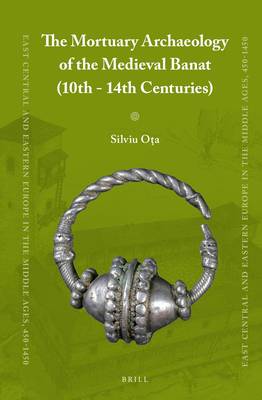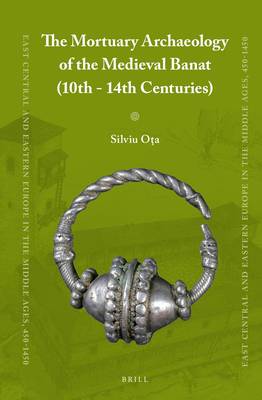
- Afhalen na 1 uur in een winkel met voorraad
- Gratis thuislevering in België vanaf € 30
- Ruim aanbod met 7 miljoen producten
- Afhalen na 1 uur in een winkel met voorraad
- Gratis thuislevering in België vanaf € 30
- Ruim aanbod met 7 miljoen producten
Zoeken
The Mortuary Archaeology of the Medieval Banat (10th-14th Centuries)
Silviu Ota
€ 383,45
+ 766 punten
Omschrijving
Winner of the 2016 George Bariţiu Prize
In The Mortuary Archaeology of the Medieval Banat (10th - 14th centuries) Silviu Oţa highlights the interactions between different ethnic groups as reflected in burial customs and funerary practices. The book will deal with the Banat as a whole (as opposed to the Romanian, Serbian or Hungarian parts of the region) since the modern political borders are not identical with the cultural boundaries in the Middle Ages. On a more general level, the goal of this book is to analyse the social dynamics in the region. The author rejects the idea that any of the "archaeological cultures" identified in the Banat (e.g. the Bjelo Brdo culture) may be associated with any single ethnic group.
Winner of the 2016 George Bariţiu Prize from the Romanian Academy for outstanding contribution to the development of Romanian culture and science in the area of history and archaeology. The prize, named after the towering figure of George Bariţiu (1812-1893) in nineteenth-century Romanian political and cultural life and former president of the Academy, is awarded for originality of the work, its contribution to its field, and its impact at the national level of the field development.
Specificaties
Betrokkenen
- Auteur(s):
- Uitgeverij:
Inhoud
- Aantal bladzijden:
- 408
- Taal:
- Engels
- Reeks:
- Reeksnummer:
- nr. 26
Eigenschappen
- Productcode (EAN):
- 9789004214385
- Verschijningsdatum:
- 28/10/2014
- Uitvoering:
- Hardcover
- Formaat:
- Genaaid
- Afmetingen:
- 160 mm x 239 mm
- Gewicht:
- 739 g

Alleen bij Standaard Boekhandel
+ 766 punten op je klantenkaart van Standaard Boekhandel
Beoordelingen
We publiceren alleen reviews die voldoen aan de voorwaarden voor reviews. Bekijk onze voorwaarden voor reviews.








